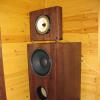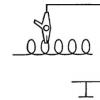Freedom Square is the geographical center of the capital of Georgia - the city of Tbilisi. In the Middle Ages, the area was called Caravanserai or Hotel Square. In 1827, Russian troops under the leadership of General I. Paskevich captured the fortress city of Erevan. Among other awards, General I. Paskevich was awarded the title of Count of Erivansky. As a result of these events, Tbilisi square was named after Paskevich-Erivansky. In the future, the squares were left with a short name - Erivansky Square.
At the beginning of the second half of the nineteenth century. the modern city square began to be actively built up: the ravine was filled up, the place where the lists and the Sunday market took place was leveled, and a plan was also outlined for laying future streets. In 1851, the construction of the caravanserai (Hotel Square) of the merchant Tamamshev was completed, which at the same time became a theater. With the appearance of this theater, the city square was renamed Teatralnaya. In 1918 it was given a different name - Freedom Square. However, after the arrival of the Soviet Army, the square was renamed again, but this time in the Zakfederatsia square. The area acquired a much smaller size, since a huge caravanserai was located in its northern part. In 1940, the local authorities decided to demolish the caravanserai, expand the square and make it the central city square. With the annexation of Georgia to the USSR, the square began to bear the name of Beria, and a little later it was named after Lenin.
Despite its small size, the current Freedom Square each time becomes a gathering place for crowded demonstrations and an arena for political battles. Today, in the central square of the city of Tbilisi, there are the Marriott Hotel, local administration bodies and the central branch of the Bank of Georgia. In November 2006, the opening of the Freedom Monument, depicting St. George slaying a dragon, took place on the square. The monument was created by Zurab Tsereteli.
Freedom Square is the perfect place to start a walking tour of the city center.
Freedom Square in Tbilisi has existed for a very long time, though under different names and different occupied spaces. Nevertheless, it is she who remembers all the important events of the country and is one of the main points of the city. It is recommended to start exploring the most important artery of Tbilisi - from Freedom Square. Along this street there is a huge number of key places in the capital of Georgia.
There is always lively traffic around the column with the monument both during the day and in the evening.
Previously, the square was a vast piece of land in front of the Kodzhor Gate, which was located on the site of the current beginning of Kote Abkhazi Street. Nearby stretched the Sololak ravine with the Avaant-Khevi river flowing into the Kura through the present Pushkin and Baratashvili streets. From about the beginning of the 19th century, the place had different names: Drovyanaya (due to the fact that there was a bazaar where firewood was sold) and Shtabnaya (because in 1824 the first stone building was built here - the headquarters of the Caucasian corps).
In 1827, the area was named Paskevich-Erivan Square (abbreviated Erivan) in honor of the general, under whose command the Russian troops managed to conquer the fortress city of Erivan. A little later, in the area of this square, namely the Pushkin Square, in 1829 the great Russian poet, Alexander Sergeevich Pushkin, lived and rested for a couple of months. This gives rise to the same name for the nearby street and park.
In 1851, a caravanserai of the shopkeeper Tamamshev (existed until 1934) and the first opera house appeared on the square at the same time. By the way, the latter functioned successfully for 23 years and only in 1874 completely burned down. At the same time, in the second half of the 19th century, the square was renamed Teatralnaya, and the ditch passing by was "removed" by throwing it, leveled and paved with stone. Nearby, there were also minor changes - in the southern part of the Maidan, gardens were completely cut down.
In 1907, an unprecedented crime took place on the square - a large amount of money was stolen from the carriage of the State Bank. This incident is attributed to the Bolsheviks led by Semyon Ter-Petrosyan (Kamo).
 One of the buildings opposite the monument to St. George is valiantly guarded by a pair of griffins.
One of the buildings opposite the monument to St. George is valiantly guarded by a pair of griffins. From 1918 to 1990, the square changed its names like gloves. She was also "Free", was called "Zakfederatsii", then Beria and even Lenin. By the way, the huge 18-meter monument of the "leader" stood for a long time (almost 50 years) in a place of honor, in the center of the square. Since 1990, the square has been returned to its legitimate and quite apt name, Svoboda.
And in our time, the place managed to "distinguish itself", becoming famous and recognizable throughout the world. In 2003, a rally began here, which grew into the overthrow of the president's power.
Now it is quiet and calm on Freedom Square. In 2006, a monument was erected in the center - a column with a monument to St. George, who kills the dragon at the top. It is noteworthy that Saint George is the patron saint of Georgia and the Georgian people.
In the area of Freedom Square, in addition to the remarkable Pushkin Square, there is an information center for tourists and guests of the city, the central branch of the Bank of Georgia, several motley cafes and restaurants, and also a good one at the beginning of Kote Abkhazi Street (for us personally, it seemed one of the most profitable in Tbilisi ).
How to get to Freedom Square?
Several large and popular streets with tourists go to Liberty Square: Pushkin, Leonidze, Dadiani, Kote Abkhazi, and a small Tabidze. Being located in the city center, the square is easily accessible for all travelers. It is not difficult to walk to it (if you live in the area of Rustaveli Avenue), take a metro or a bus.
The metro station of the same name "Liberty Square" is located just a few dozen meters from the square itself. Pay attention, next to the station, around the corner, is the Griboyedov Theater - a beautiful building in the Baroque style. If you have a desire and time, we recommend looking at it. The schedule of performances and detailed information about it can be found at
The main square of the city, from which 5 streets and one avenue radiate out like rays. Now they are called st. Alexander Pushkin, st. Kote Abkhazi, st. Shalva Dadiani, st. Galaktion Tabidze, st. George Leonidze and Shota Rustaveli Avenue. The numbering of all existing buildings in the city begins from this square. But, as a square, it appeared at the beginning of the 19th century, and before that, one of the main gates of the city, through which caravans and other travelers went further north, went to this area, crossed in places by deep, and in places not very, by ravines and ditches, to the present. Shota Rustaveli Avenue or entered the city through them.

This gate was where the street begins now. Kote Abkhazi, better known by its old name - st. K. Leselidze, and now we still remember its older names, Armenian Bazaar and Shuabazari (Middle Bazaar). So, through these - Kodzhor gates came those who come and go. But, since the gates were usually locked at night, those who did not have time had to spend the night somewhere. And, according to the Georgian historian of the 19th century Platon Ioseliani, approximately where the building of the Museum of Fine Arts of Georgia named after Shalva Amiranashvili stands now, in the 16th century there was a caravanserai of King Levan - "the royal caravanserai", as it was called. The land next to the caravanserai belonged to the princes Tsitsishvili. The place for the caravanserai was very convenient, from it it was possible to go both to the Kodzhora gates and to the Digomi and Water gates, which were below, where there is now an exit from the Serebryanaya street (Digomsky gates), and through the reconstructed passage depicting the gates (Water), you can go to st. G. Shavteli. But in order to enter one or another gate, it was necessary to overcome, one might say, a water barrier. Because along the fortress wall, along the deepest ravine, the Avanaant-Khevi river flowed (Khevi - in Georgian - ravine). The river flowed along this ravine from the Sololak ridge to the present day. st. G. Leonidze, across the square and further along the now street. Alexander Pushkin and Mukhranskaya to the Mtkvari (Kura) river. Therefore, across a ravine with a river, bridges were built to the gates of the city. On rainy days, right up to the middle of the 19th century, when, at the direction of the first governor in the Caucasus, Prince Mikhail Vorontsov, the ravine with the river was not “chained” into a collector, the mud on the square was, one might say, impassable. On the other side, behind this ravine, there were gardens, royal and not only, for example, the Bebutov princes. Well, this whole territory is already on the map of Prince Vakhushti Bagrationi, which he made in 1735 was called Garetubani (Outer Quarter). Those. the whole area outside the city wall was called that then, and even now this toponym is still preserved. It is also shown on the city plan compiled by the Russian military topographer Alexander Pishchevich in 1785. The current borders of the trapezoidal square were also determined by the Russian military topographer Colonel Banov at the beginning of the 19th century and have survived to this day.

Before receiving its first official name, this area was called differently from the beginning of the 19th century. For example, Drovyanaya, since here, on Sundays, there was a semi-official bazaar, where, among other things, firewood was sold. Then, the Headquarters, because the first stone building was built here in the mid-1820s. It was the headquarters of the Caucasian army. The building is in the style of late classicism, erected in 1824 - 1827. and has survived to this day in a somewhat rebuilt form.


The first, the official name, the square received in 1828 and immediately - for the victory. The square was named after the then chief commander of the military and civil affairs in Georgia by General Ivan Paskevich.
In 1827, Russian troops finally conquered from the Turks and stormed the capital of the Erivan Khanate, the fortress city Erivan, an event that was the culmination of numerous attempts by the Russian Empire to establish control over Transcaucasia. The main character, Ivan Paskevich, who was not deprived of the royal favor, finally received "unlimited trust" from Nicholas I... Name I.F.Paskevich (1782 - 1856), Russian general, colleague of NicholasI and one of his confidants, in
pre-revolutionary Tiflis was immortalized not only in the name, the area but also the streets , which now bears the name of Gerontii Kikodze (1885 - 1960), Georgian writer, literary critic and translator.Paskevich himself is an interesting and multifaceted person, let's say. A participant in the wars with Napoleon, fought at Borodino, commanded a division in the capture of Paris. He led such major military operations as the annexation of eastern Armenia and the capture of Tabriz (for which he was awarded the honorary title of Count of Erivan) (1827 - 1829), the suppression of the November Uprising in Poland (for which he received the title of His Serene Highness Prince of Warsaw and was appointed governor in the Kingdom of Poland ( 1832 - 1856) He defeated the revolution in Hungary in 1849. After the signing of the Treaty of Adrianople (1829), he received the field marshal's baton. In general, he clearly did not like revolutions and revolutionaries. But the people of Tifliss did not particularly like him, although he did not stay here for long. Therefore, colloquially and later, as a toponym, the name of the square was reduced to Erivan, erasing the name of this commander from the memory of the city.
In 1918, "the shackles fell" and Georgia proclaimed itself an independent state, so the square bearing the name of the strangler of freedom was urgently renamed. Naturally, in - Freedom. By the way, I’ll tell you right away that the authorities of the Democratic Republic in the toponymy of the city had little time to change. In addition to the square, they, paying tribute to the "teacher and colleague", renamed Mikhailovsky Prospekt into st. Georgy Plekhanov, but it was so successful that even the Bolsheviks did not change anything. As well as Shota Rustaveli Avenue. Although, in renaming Golovinsky Avenue into the avenue of the great Georgian poet, the Mensheviks have little merit. The fact is that it was, in today's language, a "flash mob" by the "Goluborogovites" and Tiflis youth, who one fine day, walking along the avenue, stopped passers-by and happily greeting them, saying: "Congratulations, did you hear? The avenue was renamed and now it bears the name of Shota Rustaveli! " Well, since the news in Tbilisi even now spreads faster than any mass media, the city authorities had to urgently, retroactively, rename the avenue in order not to hit their faces in the mud. And again, the Bolsheviks did not change anything, although the story with the "flash mob" for a long time were silent.

1930s

1940s
But the area, which came to power in 1921, the Bolsheviks, nevertheless renamed the area of the ZakFederatsii. Who, no longer remembers, and who already does not know - this is the Transcaucasian Soviet Federal Socialist Republic. True, it did not last long, which is not surprising, and the square, by the way, for a long time, even in official documents, continued to be called Freedom. But then completely unfree times came and in 1938 the square was named after Lavrenty Beria. For great services and great love, so to speak. Although, after 1953, they did not remember much about this, and then they simply, deeply forgotten.
Well, in the end, in 1953, apparently out of harm's way, the square was named - pl. Lenin. He won't let you down, thought the Georgian communists. And before the fall, or rather, the demolition from the pedestal, in 1990, Lenin stood and showed us the way.
In 1990, the area became Free again.


A lot of interesting things happened on the square during the past historical period. But, in connection with Beria and Lenin, I remembered.
For example, the so-called. "Tiflis expropriation" - (robbery of the treasury coach of the Tiflis branch of the State Bank on June 13, 1907 in Tiflis). During the raid, organized by the Bolsheviks under the leadership of Semyon Ter-Petrosyan (Kamo), two hundred and fifty thousand rubles were stolen. Bolshevik historiography named Joseph Dzhugashvili (Stalin) as the main leader and organizer of this action, although this is a controversial issue. Two policemen were killed, three Cossacks were mortally wounded, sixteen passers-by were wounded of varying severity. All the participants in the robbery managed to escape with the money, avoiding arrest. All this took place on the Erivan Square. Only, the irony of fate is that the Bolsheviks actually could not use this money, because even then the banks knew how to “protect themselves” from robbers. Therefore, everyone who appeared anywhere in Europe with banknotes from this "ex" was caught and imprisoned. This is how Kamo himself failed later in Berlin, and therefore he had to feign insanity and insensitivity to pain. So the heroic story turned out to be a serious failure. By the way, about Kamo.
Late in the evening of July 14, 1922, a Bolshevik, Stalin's friend and comrade-in-arms, Kamo, who was riding along Verisky Spusk (now Mikhail Javakhishvili Street) on a bicycle, hit a car to death, and the driver then swore and swore that he had not noticed a lone cyclist in the dark. The Tiflis legend says, "it was necessary to manage to find each other ... the only car in Tiflis ran into the only cyclist in Tiflis." Well, in fact, both of those and others at that time in the city were not so few. Kamo was buried in the Pushkin park, which in front of Freedom Square and even a monument was erected (by Yakob Nikoladze) and the inscription was written.

But three years later, the monument was removed, and the remains were reburied by relatives in 1990. True, the memory still remained in toponymy. Until now, many people in Tbilisi call st. D. Uznadze - Kamo.



Well, and the main building located on the square, built in the 40s of the 19th century and rebuilt at the end of the 19th century, is the building of the National Assembly (Sakrebulo) of Tbilisi. Former city government and city Duma, then Tbilisi City Hall. In the 30-40s of the XIX century, there was a city Police Department and a fire station. In 1882, according to the project of the architect Alexander Ozerov (1849 - 1922), the building began to be rebuilt and two wings were added. Later, changes were made by the architect Paul Stern. The building acquired its final appearance in 1910 - 1914. according to the project of architect. Cornelia Tatishcheva.



On the square, opposite the building of the city council, in 1851 a large caravanserai was built, which belonged to a wealthy merchant, a merchant of the first guild, an honorary mokalaka (city dweller) Gabriel Tamamshev. The building housed the first opera in the South Caucasus. The idea of building a city theater in Tiflis, in which an opera troupe was supposed to perform, belonged to the then governor of the Caucasus, Prince Mikhail Vorontsov. A lover of the fine arts, Prince Vorontsov was a far-sighted politician and adhered to the English system of colonization. Therefore, it was important for him to "educate the natives", and the opera was very well suited for this business. But, just like that, no one in Tiflis would build a building for an opera, and the practical Vorontsov suggested that the Tiflis bazaars (cloth merchants) build a caravanserai in the center of the square, allotting one part of it for the opera house. The bazaars turned out to be not far-sighted and declared that their mushtari (client) would not go to the new city to buy fabrics and other manufactures, as they called Garetubani, which was beginning to be actively built up at that time. The only merchant who was able to negotiate with the new authorities on mutually beneficial terms was Gabriel Tamamshev. He bought Tsitsishvili from Prince Egnate, as they used to gossip in Tiflis, for ridiculous money, which could only buy two cuts for a dress, land, and with the assistance of the city authorities, he built a caravanserai. The building was erected according to the project invited by Vorontsov, the Italian architect Giovanni Scudieri (1816-1851). In addition to the theater, the new caravanserai housed fashionable shops, restaurants, a hotel, pastry shops and later even a restaurant with a funny name "Tilipuchura" at present. A professional troupe invited from Italy performed at the Tiflis Opera. In 1874 the theater burned down, and the entire building of the caravanserai was destroyed in 1934 during the reconstruction of the square.


In the middle of the 19th century, here, on the square, there was a Sunday bazaar (market), having abolished which, in 1884, the city government decided to break up a public garden on this place.


The author of the park project is the famous botanist Heinrich Karl Werner Scharrer (1828 - 1906). By the way, he was also involved in landscaping the Alexander Garden, the first public garden in Tiflis, and for many years he headed the Tiflis Botanical Garden. In May 1890, on the initiative of the chief Tiflis police chief L.A. It was decided to erect a bust of the poet Alexander Pushkin, designed by the Tiflis sculptor Felix Khodorovich, and call the square Pushkin. All Tiflis collected money for the monument.




The monument was unveiled on May 25 (old style), 1892. It was cast in bronze at the K. Werfel factory in St. Petersburg, the pedestal was made of Algeti red and gray stone in the workshop of Vincenzo Pilaji in Tiflis. The monument to A. Pushkin was moved from one place of the park to another several times. Now he is facing the Museum of Fine Arts of Georgia. Shalva Amiranashvili. In 1957, a fountain was installed in the park, water enters the pool, and then a significant part of it is used again by the fountain due to the use of a special design. There, next to the park, there was a large house belonging to the family of the industrialist Jacob Zubalashvili, it was with them that the famous French writer Alexander Dumas lived for two weeks when, traveling across the Caucasus, he stayed in Tiflis in 1858-1859. This house was demolished during the reconstruction of the square and in its place the Tsekavshiri building was later erected in the 1960s-70s, which was also recently demolished. Not to be confused with the building of the Museum of Fine Arts. Sh.Amiranashvili.



This building also belonged to Zubalashvili. Its façade is facing Svoboda Square, one side overlooks the street. A. Pushkin, the other - on the street. L. Gudiashvili. At the beginning of the 19th century, this land was bought by the industrialist Yakob Zubalashvili, and in 1835 he built a hotel. In those days, it was one of the first large private buildings in Garetubani. In 1837 there was a big ball in honor of the arrival of Emperor Nicholas I to Tiflis. Later, in 1840, Y. Zubalashvili sold the building to the church department, and until 1911 the theological seminary was located here. Many future prominent public figures and scientists of Georgia and the Caucasus, as well as future revolutionaries, graduated from it. Here studied Joseph Dzhugashvili (Stalin), who entered the Tiflis seminary in 1894 and was expelled "for missing the exam for no good reason" in 1899 ". Another story is connected with this building. In 1886, Iosif Lagiashvili, expelled from the Tiflis seminary, assassinated the rector of the seminary, Deacon Pavel Chudetsky, who oppressed the seminary students, banned the teaching of the Georgian language there and spoke of it as a "dog's language." The Russian exarch in Georgia, Pavel, cursed the killer and, along with him, the Georgian people who "gave birth to him". In response, the well-known public figure, Prince Dmitry Kipiani, wrote an open letter to the exarch urging him to apologize or leave Georgia. In 1886, by decree of Alexander III, D. Kipiani was exiled to Stavropol, where he was soon killed under unclear circumstances. And Lagiashvili was tried and, thanks to good lawyers, outraged public opinion and the defendant's minority, was sentenced to 20 years in hard labor on Sakhalin. From where he fled to America, where he died, living to old age. In 1917, after a new building in Vake was built for the seminary, a hotel was reopened here - "Tsar's rooms", but a year later this name became irrelevant, and the hotel was renamed into "Palace", after the name of the street with which she was. In Soviet times, it was renamed "Palace Hotel", but in 1930 it was closed, and at different times government and military institutions were located here. In 1952, the building was transferred to the Museum of Art of Georgia, which in 1991 was named after the outstanding Georgian art scholar, director of this museum (1939-1975) Shalva Amiranashvili (1899-1975). The building was built in the 1830s. in the style of late classicism designed by the Swiss architect Giuseppe Bernardazzi (1788 - 1840). Together with his brother Giovanni Bernardazzi (1782 - 1842), he was from 1822. worked in different cities of the Russian Empire. In 1830 they drew up a plan for the city of Pyatigorsk. In 1952, under the leadership of architect. L. Kharatishvili, T. Shubladze and G. Galdava overhaul building.

By the way, about Palace Street. This was the name of a small street that began at the square, reached the governor's palace and ended at Nikolaevskaya square (named after Nicholas the First), located in front of the palace. There is no longer this street or this square in Tbilisi. And the governor's palace is now the palace of creative youth, formerly. Palace of Pioneers of Georgia. In 1938, during the reconstruction of Freedom Square from 16 to 42 meters, Palace Street (which at that time was called Kominterna Street) was expanded and it became part of the avenue. During the reconstruction, several houses were destroyed, among them the apartment buildings of David Sarajishvili and Alexander Zubalashvili, and in their place in 1940 a new apartment building was built according to the project of architect. M. Melia, A. Kurdiani and S. Kubaneishvili. Now it is house number 1 on Shota Rustaveli Avenue.



Also, more than once rebuilt and, in recent years, finally rebuilt st. A.A. Pushkin. Once on the house number 5, above the no longer existing 3-storey building (formerly Pushkin passage), which was built in 1901-1902 by architect. Shimkevich, and in 1935 it was rebuilt by architect. M. Neprintsev had a sign that this place used to be a 2-storey old house, destroyed in 1901; and in this house - Tsurimov's tavern, in 1829 A.S. Pushkin during his stay in Tiflis. There, in gold letters it was inscribed: "Alexander Sergeevich Pushkin lived in 1829 from May 27 to June 10 (old style) in a house that stood at this place." It is no longer drawn, because this house is no longer there. Also, there is no longer the famous in Tiflis "Kavkaz" hotel, which was located in a house on the corner of the square and st. Sololakskaya (then S. Kirov, now G. Leonidze). This building and several other houses burned down in 1991 during the so-called. "Tbilisi war". Now here is the hotel "Cortiard-Marriott".



This is the maximum Short story Freedom Square.
At different times, she bore different names, and the history is remarkably traced from them - Paskevich-Erivansky Square, named after the conqueror of the Caucasus, the count. In 1827, the fortified city of Erevan was taken by Russian troops under the command of General I. Paskevich. Paskevich, among other awards, was awarded the title of Count of Erivansky, in the name of Paskevich-Erivansky, and Tbilisi square was named, which was later called Erivansky Square for short, and later it bore the names of Zakfederatsii, Beria, Lenin, and now Freedom Square. It still has the building of the State Duma.Petersburg architect Pavel Stern. Hall in the City Hall. 1886 year
The main square 100 years ago was not as spacious as it is today. Earlier on the square, in its central part, there was a large Tamamshev Caravanserai building For clarity, what is "Caravanserai" in Russia, the analogue was Gostiny Dvors in cities where trade was going on, well, here Tamamshev also had the first theater in Tiflis, and around there were trade rows and premises for shops. The building was built in 1851 by an Italian Giovani Scudieri based on the basilica in the city of Vincenza (pictured is the building on the right).
According to the materials of those times, both the building and the theater were of extraordinary beauty, but they perished in the fire and existed for 23 years.
The building was restored in 1879, but it was decided not to restore the theater. There was a shopping arcade here. And in 1930, the entire building was demolished completely.
The building of the Caravanserai after the fire.
And now, if you turn your back to the building of the State Duma and go around the building of the Tamamshev Caravanserai on the right, you can see the beginning of Pushkinskaya street
On the other side of the same square, behind a small square bearing the name of A.S. Pushkin, there was Orthodox Theological Seminary, later alma-mater of I. Stalin, and now Art Museum of Georgia.
Building by architect Bernardazzi. End of 1830
Photo by D. Ermakov. Photo from early 1900.
Seminary inside
Pushkinskaya street
in memory of the great Russian poet who stayed in one of the houses on this street, a clipping from a newspaper from the beginning of the last century reads:
There is no house, but the street remains
Nowadays, there is a square and a monument to Pushkin in front of the building of the former Seminary
".... Pushkin Square. On Erivan Square, near the Tamamshev caravanserai, there will be a small square, in which a bust of Pushkin is placed. Although the park was built relatively recently, it has grown well. In it you can get mineral water, kefir and milk .... "
On Pushkinskaya Street and not far from the park there was hotel "France"
On the other side to the left of the Caravanserai building, if you stand with your back in the City Hall, Erivan Square looked like this.
View from the other side of Erivan Square to the Duma building
The editorial office was located on Erivan Square newspaper "Caucasus"













